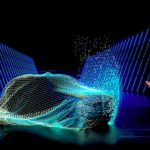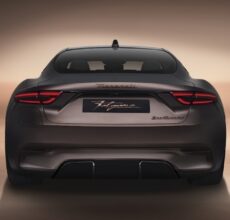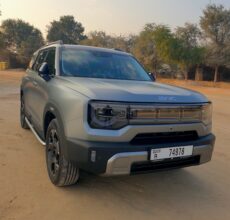Maseratis have always been electrifying. Well, now Modena has stepped up the efforts to electrification, served straight without the pun. With the new Ghibli Hybrid, Maserati enters the world of electrification and that leaves us with just one question. It looks like the obvious thing to do but what does it sound like?
Recent months have seen the Trident asserting its edge with some important announcements. Like distancing from Ferrari-supplied engines in a couple of years, and coming back to its racing lineage with the MC20 super sports car. Now, the new Ghibli Hybrid represents one of the most ambitious projects for Maserati.
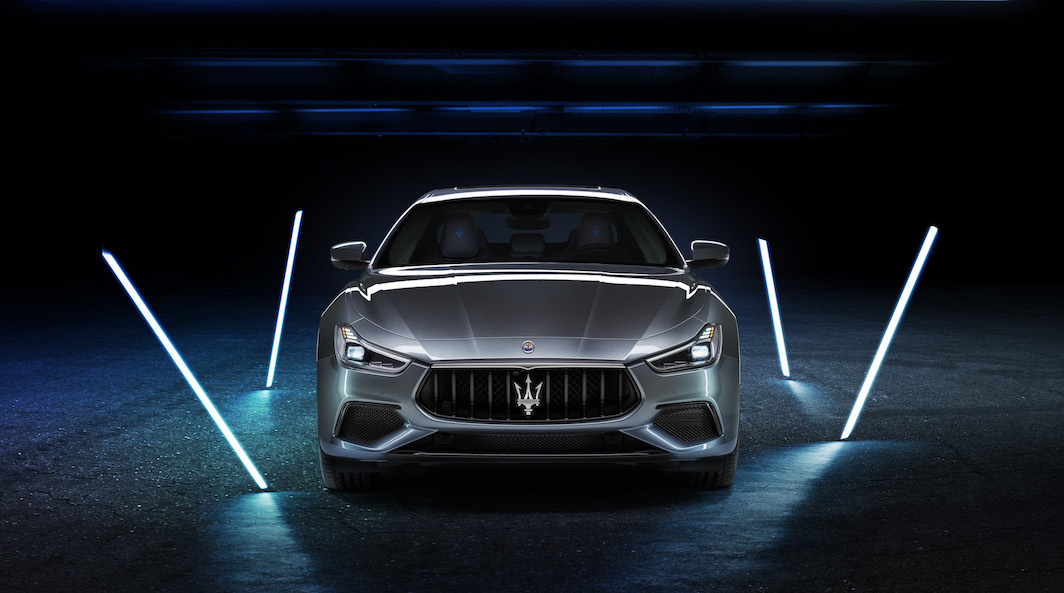
New Ghibli in the mild hybrid form – balancing performance and sustainability
While putting together the Ghibli hybrid, the brand placed two things on priority – creating a sustainable future and creating something that felt Maserati. Maserati’s hybrid solution focuses primarily on improving performance, while reducing fuel consumption and cutting emissions.
Come to think of it, the decision to introduce hybrid technology on the Ghibli sedan seems an obvious choice. Since its launch in 2013, the Ghibli has copied itself over 100,000 times and embodies the Maserati DNA as a more compact ‘quattroporte’, with the characteristic power and sound intact. So, when it swerves into the electric highway, how does Modena HQ tackle this challenge? Especially the thrilling sound.
The Maserati 48 volt hybrid system has four parts: BSG, battery, eBooster and a DC/DC converter. The BSG (Belt Starter Generator) does the job of an alternator recovering energy during braking/deceleration and charges the battery in the boot, which in turn powers the engine’s eBooster. The reason for installing an eBooster on the car is to back up the conventional turbocharger, working in tandem with it, to sustain the engine’s power output at low rpm. The operating strategy of the hybrid system ensures that the eBooster is always available, via battery or BSG, whenever it is needed. The BSG and eBooster combination is unique in the hybrid sedan segment and provides an extra boost when the engine reaches peak rpm in sport mode. This allows the performance benefits to be fully enjoyed, while in normal mode it balances fuel use and performance.
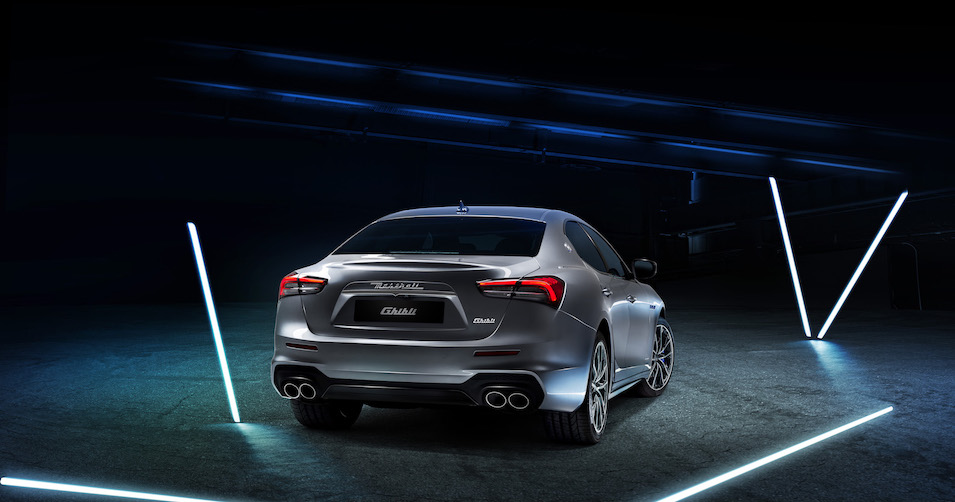
The hybrid system is mated to the 2.0L four-cylinder turbo charged engine. A maximum power output of 330 hp and torque of 450 Nm delivered from as low as 1,500 rpm makes the new Ghibli Hybrid’s performance data very impressive: top speed of 255 km/h and acceleration from 0 to 100 km/h in 5.7 seconds. 165 hp per litre is also the best in class specific power for the 2.0L engine. In weight distribution too, the new arrangement is better than the familiar engines, by placing the lighter engine in front and the 48V system in the rear. This version weighs about 80 kg less than the Diesel.
The arrangement combines the best skills of two different engines. Performance and smooth response of a 6-cylinder petrol engine and the response at low engine speeds of a 6-clylinder diesel. The hybrid powerplant provides a CO2emission level 25% lower than the 6-cylinder petrol engine and even lower than the diesel; it is also 20% fuel saving over the 350 hp V6 version. In short, faster than diesel and smoother and more sustainable than a V6 petrol engine!
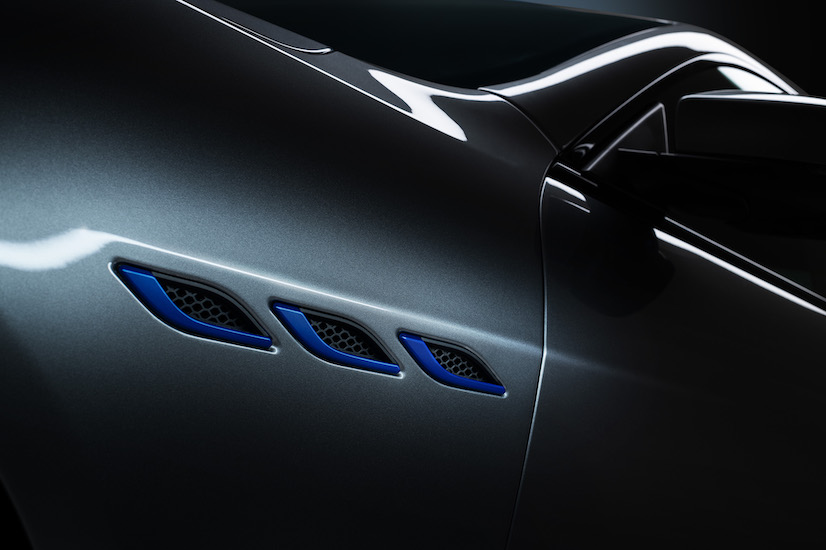
The special blue
Ghibli Hybrid has a newly designed exterior and interior with a common denominator in the restyling to signify the hybrids. As developed by the Centro Stile Maserati, it is the Cobalt blue anodized colour. On the outside, this blue colour characterises the three side air ducts, the brake callipers and the thunderbolt in the oval that encloses the Trident on the rear pillar. Inside, it is there on the embroidered seams of the seats. The colour grey in the launch images is chosen to be a hybrid too – it blends cool and warm tones!
The front grille is new, with bars redesigned to represent a tuning fork, a resonating device that emits a sound of extreme purity, and happens to bring the Trident symbol to mind. The light clusters in the rear too have been completely restyled, with a boomerang-like profile inspired by the 3200 GT and the Alfieri concept car.
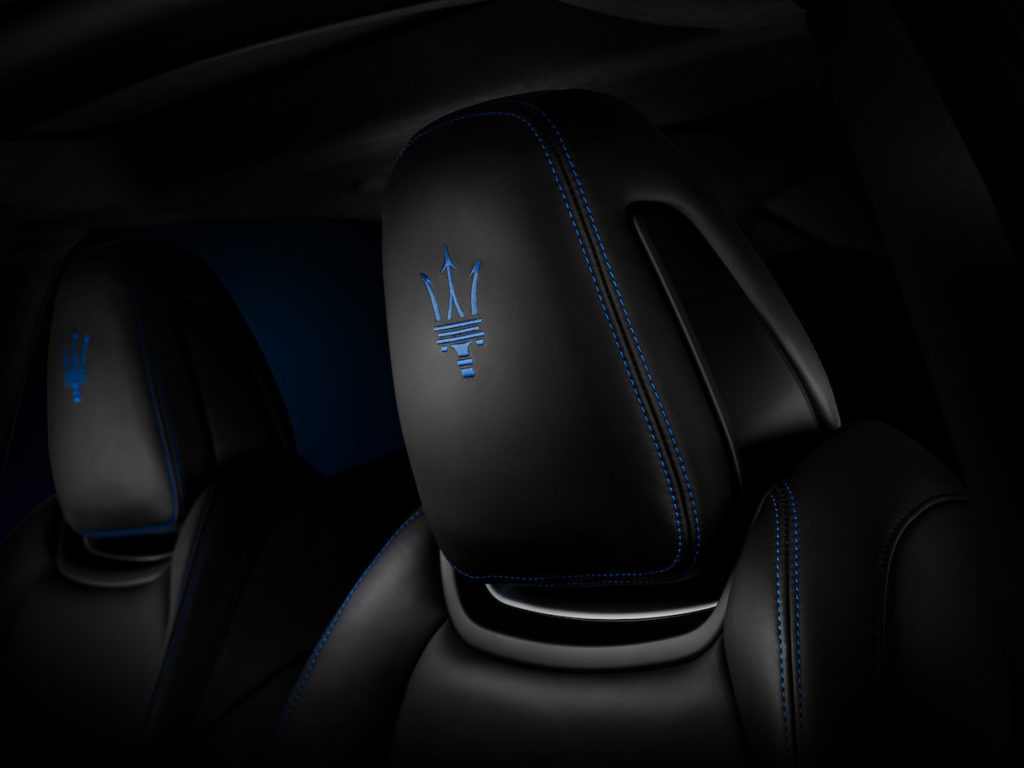
Constant connectivity and self health-check
Ghibli Hybrid also marks the debut of the new Maserati Connect program, which enables a constant connection with the car. Maserati Connect makes good use of your smart phone with inbuilt Amazon and Alexa services.
As with cars featuring a degree of autonomy, the new Ghibli also gets over-the-air updates for software upgrades, keeping it up to date with developments at Modena. The system can not only give itself a health check from time to time but also offer safety support and SOS connectivity in case of an emergency like an accident.
The multimedia system of the Ghibli Hybrid is also a generation ahead and can be customised through the touchscreen of smart phone. The built in real-time navigation shows the way, anytime anywhere. The multimedia system’s HD screen and the instrument panel get new graphics and the former is increased in size from 8”4 to 10.1”.
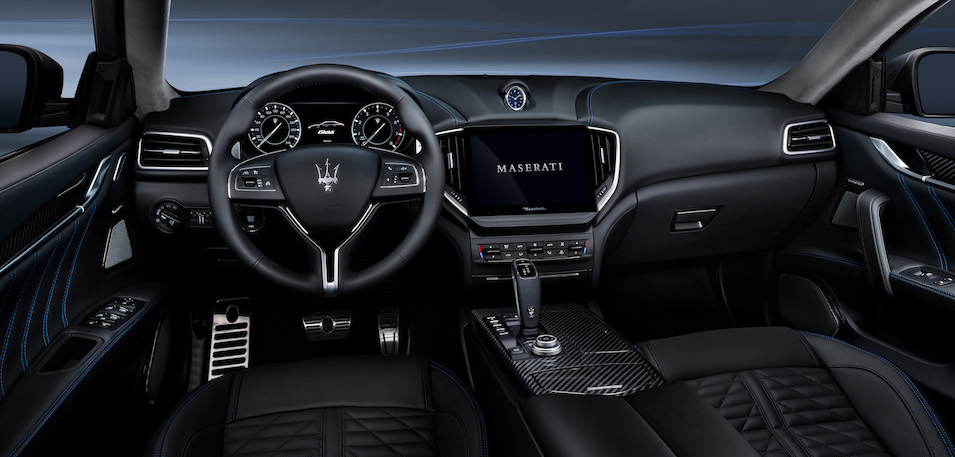
All-electric ahead
The first step in a plan that will lead to the electrification of Maserati, the new Ghibli Hybrid is developed by the Maserati Innovation Lab of Modena and will be produced at the Avvocato Giovanni Agnelli Plant (AGAP) at Grugliasco (Turin). The Brand’s first all-electric cars will be the new GranTurismo and GranCabrio, scheduled for 2021.
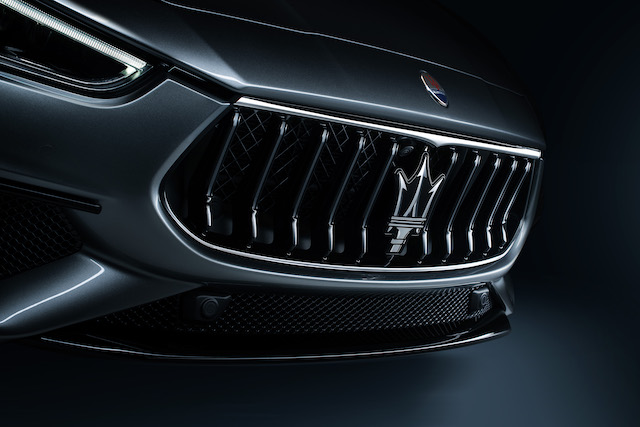
So, before signing off, what about the signature sound of the Maser?
The Ghibli Hybrid is a Maserati in every respect, including the distinctive growl, which, in spite of the hybrid propulsion, is still achieved without resorting to amplifiers, by just tweaking the fluid dynamics of the exhausts and adopting resonators, tuned to deliver the typical roar – as reassuring as it should to the ears of a passenger in the Maserati Ghibli hybrid.

